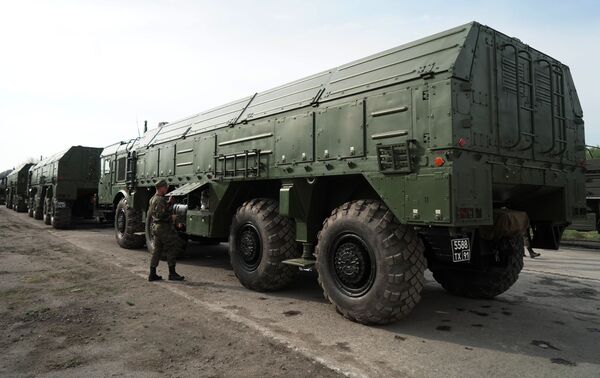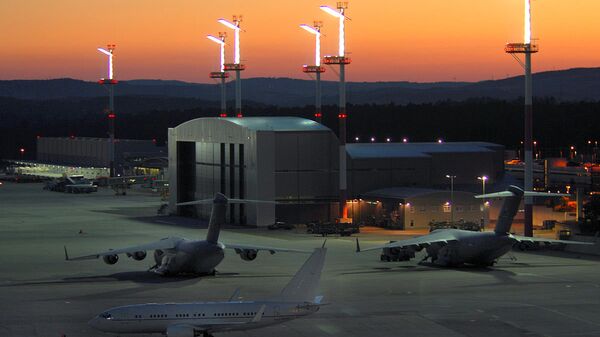America's central European military installation, Ramstein Air Base in Germany, alerted its personnel of a "real-world missile launch in the European theatre' on 12 December.
After the proper procedure was followed and timely notifications issued to personnel, any threat to the base was ruled out as the military hub’s command issued a notice on Facebook stating "the missile launch was assessed to be part of a training exercise".
The Command Post thanked all staff for their ‘quick response’ to ensure that the proper safety precautions be taken.
There is still negligible information regarding what early warning system triggered the alert, writes The War Zone, applauding the fact that the system worked effectively and the base took the threat seriously, potentially providing a case study for evaluating shortfalls in such procedures.
It adds that there are no details as to how well the installation staff observed proper procedure, or how effective the individual warning system was.
As to the source of the 'training exercise" launch that caused the alarm, there is no clarification at this point, writes the outlet, suggesting that the base could potentially be a prime target for an array of adversaries.
It points the finger at Russia, with ballistic and cruise missiles such as the Iskander nuclear-capable missile system, located nearby in Kaliningrad - a Russian exclave wedged between Poland and Lithuania.

Iran is also suggested as possessing increasingly capable long-range ballistic missiles. Iran's Islamic Revolutionary Guard Corps (IRGC) touted the possibilities of its Raad 500, along with its Zohair rocket motor, in February 2020.
The outlet writes that the developments were a driving factor in establishing an anti-ballistic missile screen in the form of two Aegis Ashore sites in Eastern Europe.
Aegis Ashore is a land-based variant of the sea-based Aegis Ballistic Missile Defense (BMD) system. The Missile Defense Agency, via NATO, operates Aegis Ashore sites in Poland and Romania, designed to help defend Europe as well as the United States in case of limited missile strikes.
It has also been suggested that an allied drill could have been confused for an unknown launch from within the European theater.
There has not been any official comment from the US European Command.
Erroneous Hawaii Incoming Missile Alert
The current Ramstein Air Base alert of a potential incoming strike echoes an incident that occurred on 13 January 2018, amid escalating tensions between the United States and North Korea.
At the time, an early-morning emergency alert had mistakenly warned of an incoming ballistic missile attack across Hawaii.
The alert, dispatched to cellphones by the Hawaii Emergency Management Agency, was revoked 38 minutes after it was issued. Nevertheless, it sowed widespread panic, followed by outrage at why it took so long to rescind.
Officials subsequently said the alert was the result of human error, ruling out the possibility of hackers or a foreign government being involved.
Students at University of Hawaii at Manoa panicking after missile threat was issued #hawaii pic.twitter.com/NfDkt1L5TQ
— Joe Walker (@_JoeWalker) January 13, 2018
According to Richard Rapoza, a spokesman for the agency, the mistake had purportedly occurred during a shift-change drill that takes place three times a day at the emergency command post.
The alert came as Hawaii had been on high alert, staging monthly air-raid drills, since President Donald Trump and Kim Jong-un, the leader of North Korea, began a verbal exchange of bellicose rhetoric, with Kim’s government promising more missile tests.


